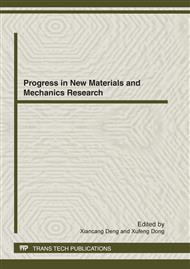p.179
p.184
p.189
p.193
p.198
p.203
p.208
p.212
p.217
Synthesis and Properties of an New Amphoteric Retaning Agent
Abstract:
The mono polyethylene glycol maleate (MPEGM) was prepared by direct esterification of maleic anhydride (MAH) and polyethylene glycol (PEG). The yields of monoester (YM) could reached to 96% when the molar ratio of MAH and PEG was 1.2 using 2 wt% p-toluene sulphonic acid (PTSA) as catalyst at 95°C for 3 h. The amphoteric retaning agent (ARA) with excellent retanning properties was synthesized by copolymerization when the molar ratio of methacrylic acid (MA), MPEGM and dimethyl diallyl ammonium chloride (DMDAAC) was 3 : 1 : 0.2 using 3 wt% ammonium persulfate (APS) as initiator at 90°C for 4 h. The applied results showed that retanned leather by ARA had excellent selective filling and can improve remarkable the flexiblity and elasticity. The chemical structure of the ARA was characterized by FTIR.
Info:
Periodical:
Pages:
198-202
Citation:
Online since:
April 2012
Authors:
Price:
Сopyright:
© 2012 Trans Tech Publications Ltd. All Rights Reserved
Share:
Citation:


